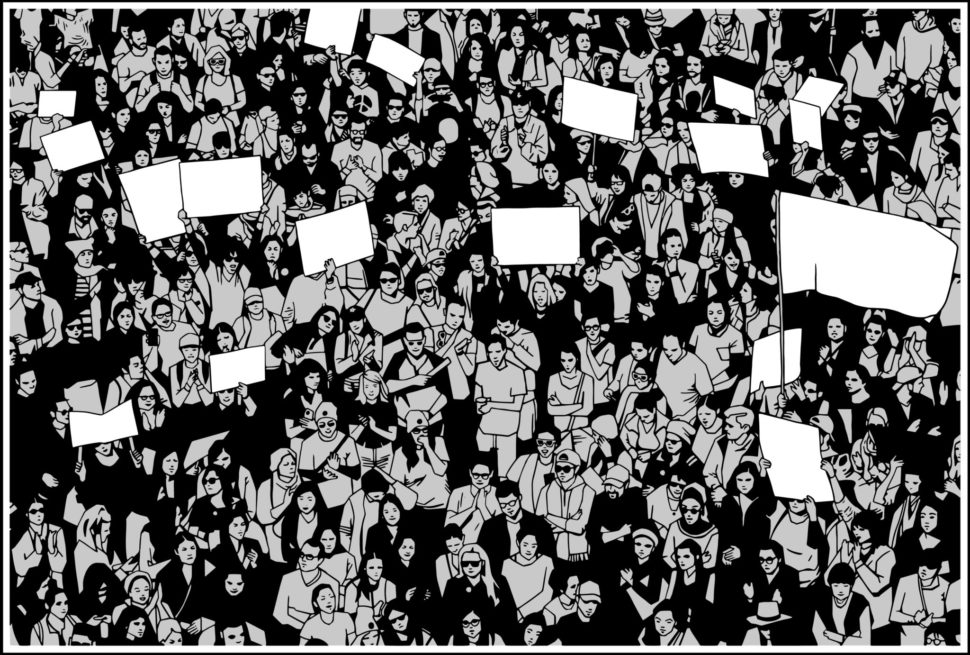Technology may positively impact our response to global challenges. Here are five exciting examples of how technology protects human rights.
Lately, all we’ve been hearing about is how anti-social social media is and how our personal data is being used to manipulate us online. Don’t get me started on the robots that are set to steal our jobs and take over the world.
We’ve focused on the fear that surrounds future technology and forgotten the positive impact it could have on our world.
Like any major political or economic change, technological change can create both risks and opportunities. The way we use these changes is what will matter. We are living in an era of unprecedented technological advances.
Developments in artificial intelligence, robotics, and genetic engineering will inevitably force us to consider emerging ethical questions. However, those creating these technologies also have a great responsibility to ensure that they fit in with current human rights standards, and could make up part of the long-term solution to current human rights concerns.
Read More: Why We Should Care About Grammarly’s Gender-Biased Features
We are already seeing the start of this positive change. In May 2016 Microsoft partnered with The Office of the UN High Commissioner for Human Rights. The corporation agreed to provide a grant of $5 million (USD) to support the development and use of advanced technology designed to better predict, analyze, and respond to critical human rights situations.
Is Microsoft leading the way by showing us how technology protects human rights?

Could technologies like artificial intelligence and blockchain help to solve the following issues and improve the way technology protects human rights?
1. Encryption and Digital Security Tools can Help to Curb Online Harassment Against Women
It has been officially recognized numerous times that women and girls are more likely to be subjected to violations of their rights to expression, privacy, dignity, and safety online.
The Internet is a major sales platform for human trafficking. The United Nations reported that 76% of trafficked persons are girls and women. It is not news that women and girls experience both disproportionate and qualitatively distinct threats to their privacy, security, dignity, and ability to participate fully online.
Read More: Everything you Need to Know About Recent Section 230 Changes
Encryption, anonymity, and digital security tools could be used to defend the safety of women and girls online which will reinforce numerous human rights. It could also be used to protect human rights defenders who are working on issues of gender-based violence and discrimination.
By using a mathematical process, encryption tech can make data unreadable by anyone who does not have the encryption key.
What is remarkable about encryption is that it protects the confidentiality and integrity of data stored on a device and that of data transmitted over a network.
Anonymity tools, such as Tor, use encryption and routing techniques. This enables them to conceal an individual’s location and behavior online from intermediaries.
Encryption and anonymity tools also allow women access to vital websites online. For example, sites relating to women’s rights and reproductive health (in particular information about access to abortion and birth control) are often targets for government censorship. These tools allow women to withhold their location and identity from governments seeking to withhold such information. This could be detrimental to an individual’s human rights and health.
This type of software has also been used to allow women to securely and anonymously report instances of sexual assault and violence. For example, SecureDrop is a tool developed to facilitate anonymous whistleblowing to journalists over the Tor network. However, developers are now investigating how it could be used for anonymous whistleblowing related to gender-based harassment and violence.
This was emphasized in 2015 by the United Nations Special Rapporteur on the promotion and protection of the right to freedom of opinion and expression. David Kaye stressed that although these tools can be used by perpetrators of harassment, they are also vital to protecting human rights. They can be used to ensure the privacy of those who are vulnerable to technology-facilitated violence and should be encouraged rather than undermined.
The following year this sentiment was echoed by the UN High Commissioner for Human Rights, Zeid Ra’ad Al Hussein. In a submission to the Special Rapporteur on Violence Against Women he stated that “it is neither fanciful nor an exaggeration to say that, without encryption tools, lives may be endangered.”
2. Social Media can Support Activism and Help to Understand Public Sentiment Reliably
Today information is easily diffused over endless digital channels in an instant. The internet allows information to be broadcast from basically anywhere by anyone. Simple technologies like smartphones also allow evidence to be captured on site and broadcast to the world.
Digital channels like social media platforms also mean that public sentiment can be reliably understood. It also makes it very easy for the public to become aware of injustices in the world and can help social movements gain momentum. This can effectively mobilize people to advocate for their rights and campaign against human rights abuses while they are happening.
There are countless examples of campaigns that took off online in the past year alone. I’m sure you are all familiar with the #metoo campaign. This movement is a force for female empowerment.
The campaign started in the US in 2006 and aimed to unite victims of sexual abuse in underprivileged areas. Last year when actress Alyssa Milano got involved, #metoo went viral across all social media platforms. The hashtag highlighted the magnitude of the problem and showed strength in numbers.
Although ‘hashtag movements’ don’t always lead to legal change, they do generate awareness which is a major step in the right direction.
It’s not just ‘hashtag movements’ that have powerful effects. Social media offers activists a way to set up protests and track their locations, livestream demonstrations, gather vast numbers of signatures via online petitions and demand action from those in power. Social media platforms are outlets for people to freely express their opinions and keep human rights issues at the forefront of national dialogue.
3. Cloud Computing and Big Data Analysis can Predict and Prevent Human Rights Crises
Rights View is an information “dashboard” that is being developed by UN human rights officials. The tool, powered by cloud computing and big data analysis will aggregate large quantities of internal and external data on human rights violations in real time.
The tool will help to facilitate analysis and to predict emerging issues before they become critical. The technology will also provide data to guide responses.
This technology could be used to stop prevent human rights abuses before they happen. For example, xenophobic and racist rhetoric from public figures can affect attitudes towards migrants and refugees. By alerting UN attention to such attitudes and public discourse, human rights protectors can intervene and have a higher chance of safeguarding those at risk.
4. Technology Allows us to Use Collective Intelligence From the Ground up during Environmental Disasters
More than 2 million people die annually from diseases attributed to pollution. The negative effects of environmental degradation like water shortage, natural disasters and famine are experienced all over the world. On the most basic level, if there’s no sustainable environment, no one can enjoy human rights like safety, security, and health.
There is an undeniable link between the environment and the enjoyment of human rights.
New technology has the potential to track pollution, environmental damage, and alert people to early health risks. All of which enhance the enjoyment of human rights.
For example, technology has revolutionized disaster response.
In April 2015, a shift of the plates beneath Kathmandu was detected. This caused a rapid response from digital activists worldwide. They collaborated with mappers who crowdsourced expertise around the world to create maps of the city. Global volunteers worked from satellite images to update the research before the earthquake was due to strike.
Post-earthquake, the team collected images of the damage from social media and on the streets of Kathmandu. The maps created by the team of activists proved to be far better than any that were provided by officials. This attracted attention from both local responders, the Nepalese Military, MapAction, and the UN.
Before the technological revolution, mapping, data collection, needs assessment and damage analysis could only be done by governments or international agencies.
Nowadays, local groups are able to lead these processes. Unlike outsourced experts who were outsiders, local groups can carry out the work more efficiently and rapidly. Making use of local and remote mappers to contribute to one project also opens possibilities to learn and support each other. Any time saved in an emergency situation could have a huge impact on the disaster’s effects.
This crowdsourcing phenomenon is possible thanks to technology. Using collective intelligence is improving disaster response and therefore helping to protect the rights of those in affected areas. Using technology to optimize human talent and knowledge in this way is something we couldn’t imagine even ten years ago.
5. Blockchain Technology: Reducing Corruption, Increasing Transparency
Blockchain technology could provide a transparent, indisputable record of transactions instantly.
Read More: Five Ways Blockchain Will Change the World
This means that this could remove corruption and increase accountability in the allocation of aid. This theory was recently tested in a project carried out by Start Network. They successfully carried out a trial to see if blockchain tech could help track every dollar in aid from donor to recipient and trace how it was spent.
The results showed that the way money flows through the humanitarian system can be transformed by blockchain. Sean Lowrie, Director of the Start Network emphasized that this innovative change is not only possible but essential.
These are just five of endless ways technology protects human rights to improve the world we live in. In a world that is drastically becoming more and more critical of technology, it’s important to remember what it has given us as well.



















WHOO HOO
This article helped my Technology protecting social media soooooo much! thanks!